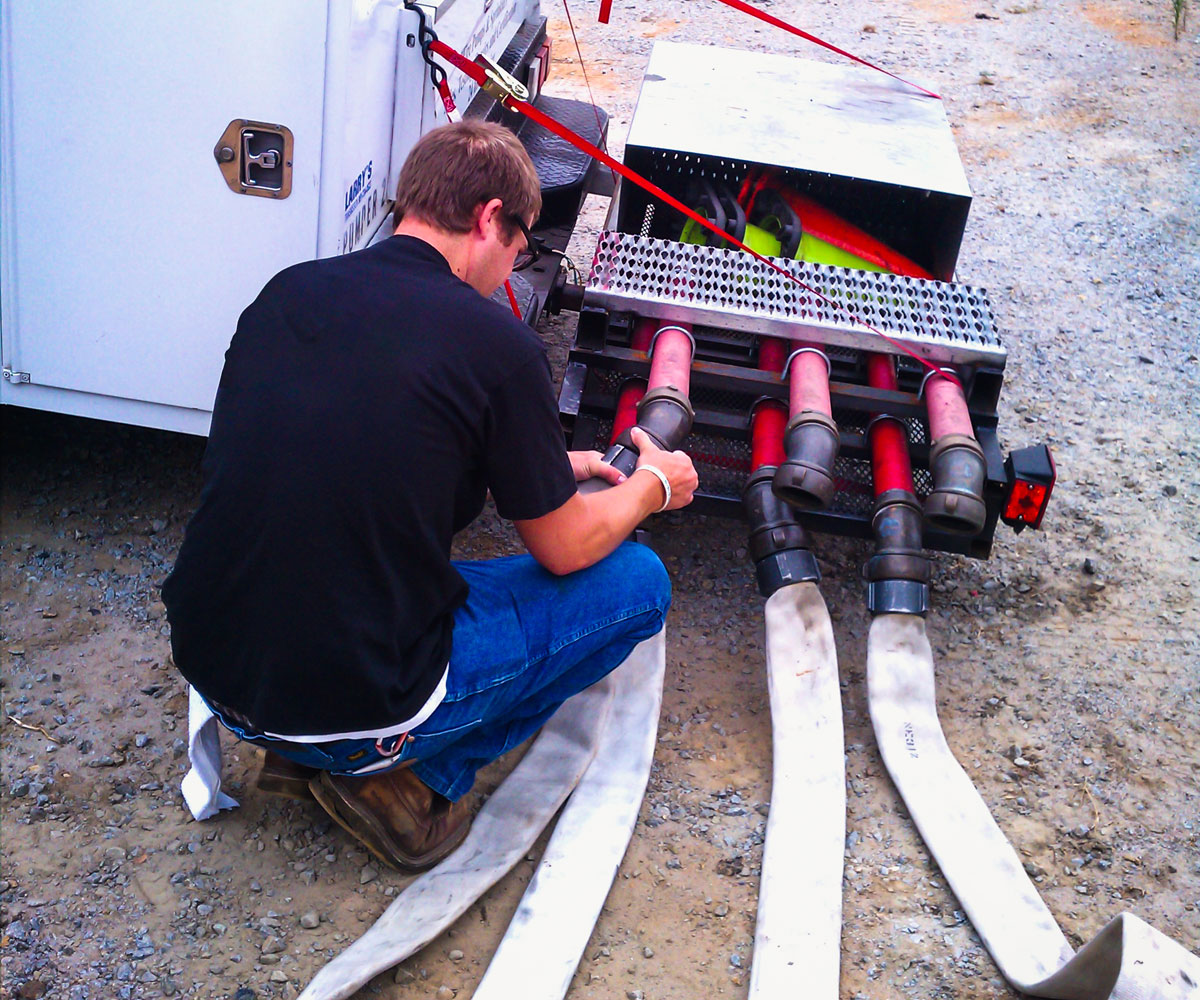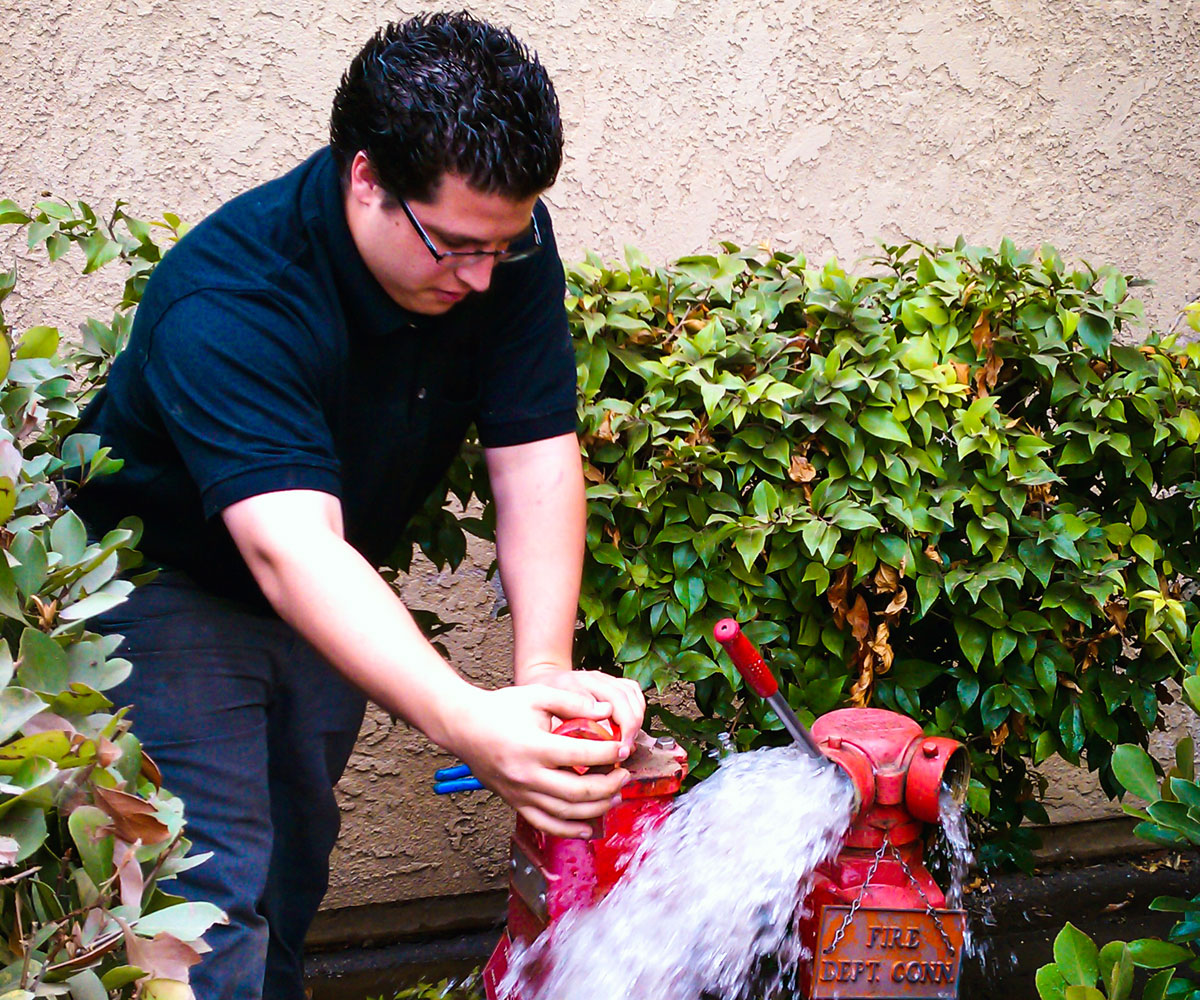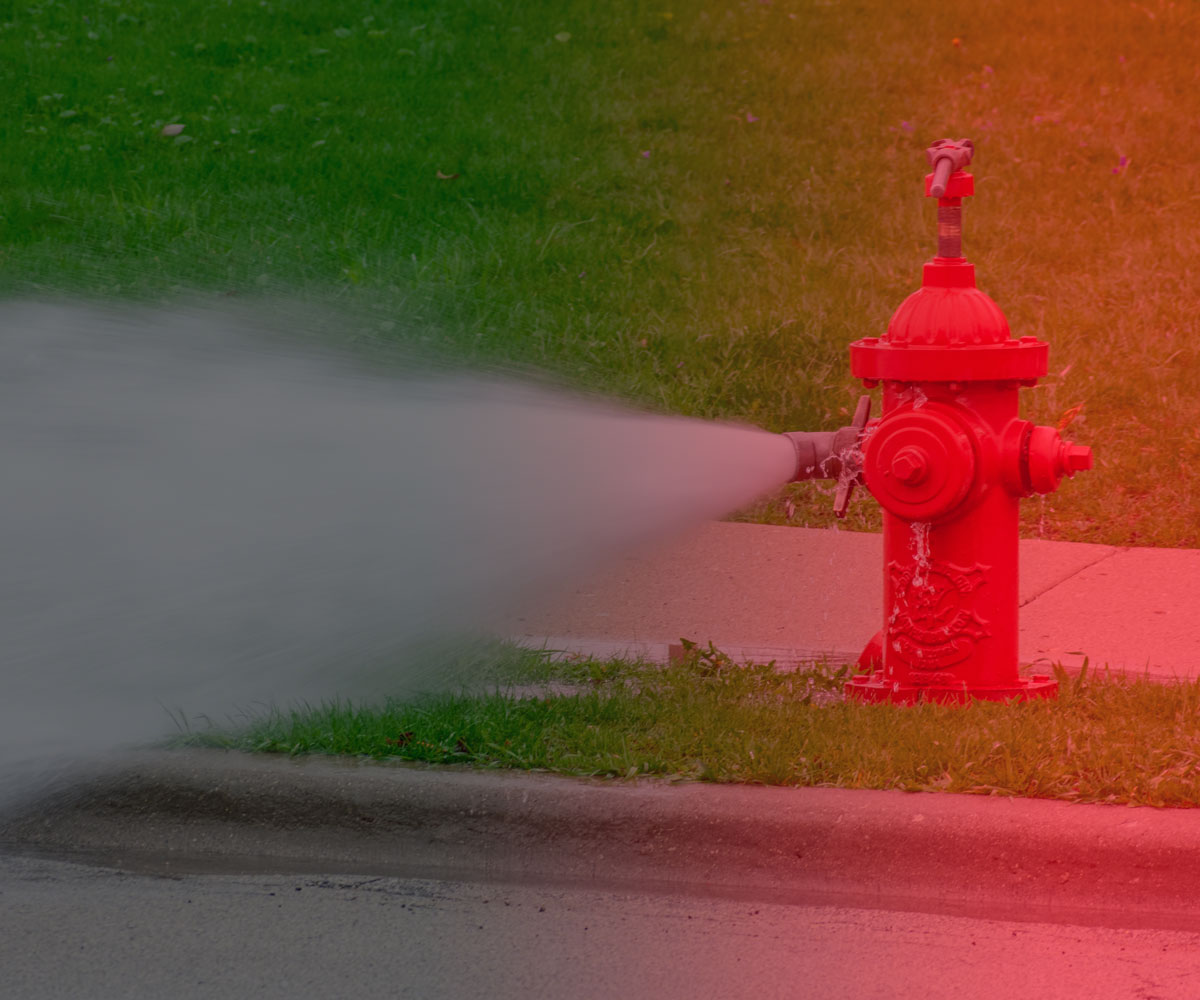Fire Hydrant Testing
Hydrant flow testing tests water main capabilities. Hydrant flow tests are required prior to new construction. Flow testing is also conducted prior to the installation of fire suppression systems. Static, flow, and residual pressure data are used to calculate test results which are provided both numerically and graphically.
Performed by city officials or professional contractors, fire hydrant testing verifies the performance of a city’s water distribution system, determining the pressure and rate of flow available at various locations. It measures static (non-flowing) and residual (flowing) pressure, as well as the rate of discharge in gallons per minute (GPM) of each fire hydrant.
The data that’s collected is used for two important purposes:
● Uncovering closed valves, heavy pipe-wall deposits, or other problems in a water distribution system. Reduced rates of flow often stem from blockages or other infrastructure problems.
● Properly designing fire sprinkler systems for commercial and residential structures. If water supply pressure and flow readings are off, it can lead to an underdeveloped system that requires additional fire pumps or an expensive overhaul of pipe fitting.
Besides delivering peace of mind that hydrants will work in an emergency, hydrant flow tests enable municipalities to color-code their fire hydrants according to their strength of output.
The colors categorize hydrants by the GPM of their flow; for instance, blue hydrants have a “very good flow” of 1,500 GPM or more and red hydrants are “inadequate” with flow below 500 GPM.
This system allows fire departments to assess their water resource capabilities quickly when arriving on the scene of an emergency.
We provide the most quality Fire Hydrant flow tests in the country with the most experience and use the most up-to-date technology to ensure that pressure readings are finite. Fire Hydrants protect lives and property.
- Flow Pressure Testing
- Static Pressure Testing
- Annual Safety Inspections
- ISO Reporting
- Flow Pressure Testing


From the 2019 edition of NFPA 291
4.13.1 Public fire hydrants should be flow tested every 5 years to verify the capacity and marking of the hydrant.
The 2019 edition of NFPA 291: Recommended Practice for Fire Flow Testing and Marking of Hydrants (4.1.3) recommends that fire hydrants should maintain a residual pressure of 20 psi (pounds per square inch), or 1.4 bar, for effective firefighting, as well as to prevent backflow that could contaminate the public water supply.
Frequently Asked Questions

The Fire Department is able to determine proper operations of valves, visible and audible leaks, water pressure, flow of gallons per minute and ability to flush out sediment in the main. This practice not only extends the life of our water mains but improves water quality.
 Your water pressure may be reduced while hydrants in the area are flowed but will never stop. The pressure will return quickly.
Your water pressure may be reduced while hydrants in the area are flowed but will never stop. The pressure will return quickly.
 You will receive for each hydrant and a duplicate written inspection report will be submitted to the fire marshal.
You will receive for each hydrant and a duplicate written inspection report will be submitted to the fire marshal.

